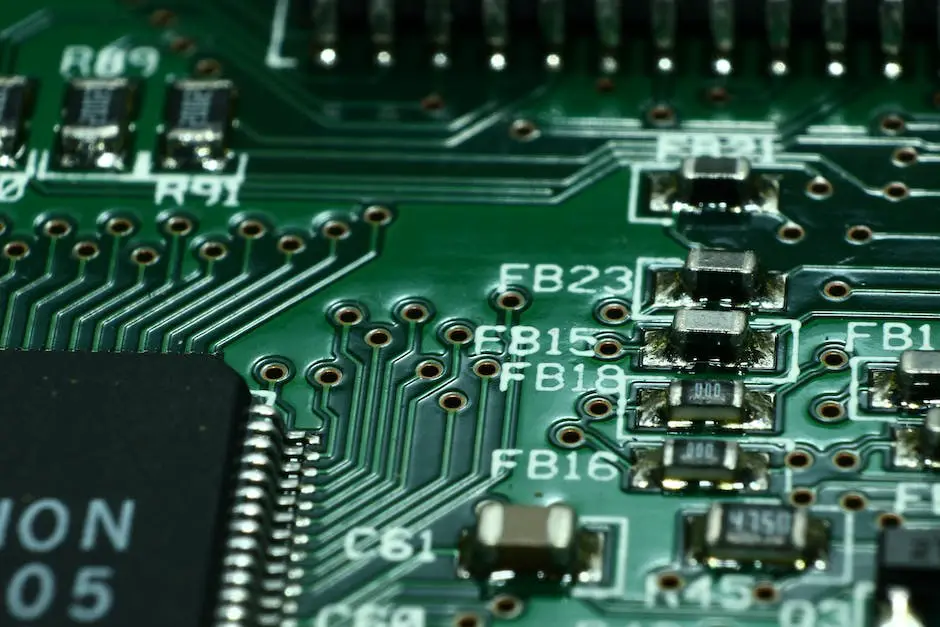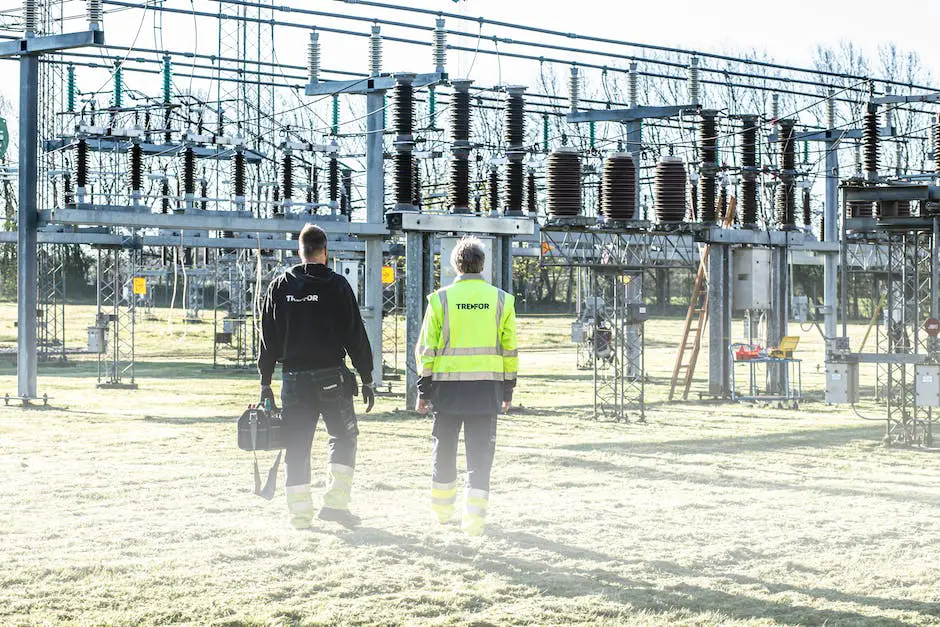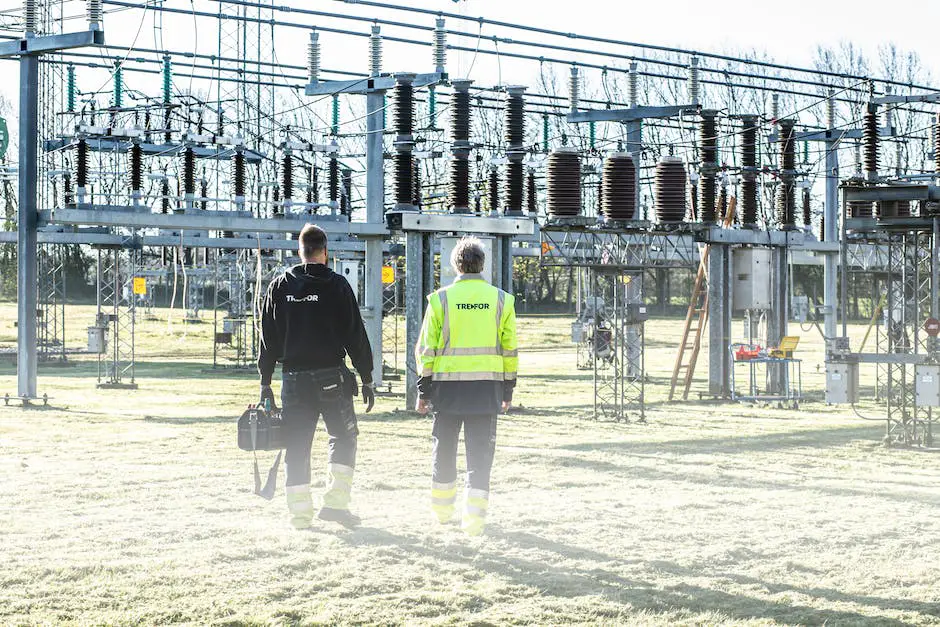
Understanding Interoperability in Substation Automation: Substation Automation is a vital aspect of the energy sector, utilizing digital solutions to enhance operational efficiency in electric substations. It involves the use of Intelligent Electronic Devices (IEDs) equipped with microprocessors for detailed electricity monitoring and control.
Communication protocols such as IEC 61850, DNP3, and Modbus enable interaction between different devices and systems. Automation software provides a user interface to monitor and control substation operations.
Read Also: IEC 101 vs. IEC 104: Understanding the Differences
Interoperability is crucial for seamless communication and collaboration between devices from different manufacturers. It reduces dependency on a single vendor and allows for future upgrades and flexibility. Standardization and protocols like IEC 61850, Modbus, DNP3, and GOOSE ensure effective information exchange.
Despite challenges, solutions such as uniform standards, middleware, emerging technologies, and open-source approaches are improving interoperability. Case studies demonstrate the benefits of interoperability, including cost reduction, flexibility, efficiency, and improved security. Achieving complete interoperability is essential for an interconnected and efficient energy landscape.
Understanding Substation Automation
Substation Automation is a part of the energy sector that involves implementing digital solutions to increase operational efficiency in electric substations. These technologies are prevalent across the industry due to their capacity to reduce the potential for human error and deliver precise results, continuously monitor grids for defects, and effectively manage increasing energy loads.
The Role of Intelligent Electronic Devices
An instrumental part of substation automation are Intelligent Electronic Devices (IEDs). These devices are equipped with microprocessors that enable detailed electricity monitoring and controls. IEDs, such as circuit breakers, protection relays, and transformers, are critical for automating the functions of an electric substation. They measure factors such as current, voltage, and power factor and relay the information to control centers for continuous analysis and monitoring, which makes IEDs integral for efficient grid operation and management.
Communication Protocols in Substation Automation
Communication protocols play a vital role in substation automation. They allow different devices within the substation and communication networks to interact and execute the automation process. Protocols such as IEC 61850, DNP3, and Modbus have become standard within the sector. IEC 61850, for example, is specifically designed for substation automation, enabling extensive communication, control and interoperability between IEDs and the control system. Various communication technologies such as Ethernet, radio, and fiber optics are used to transport this data between the different parts of the system.
Automation Software in Substation Automation
Automation software in substation automation systems provides a user-interface to view and control the operations of the substation. It comprehensively collects data from IEDs and converts them into understandable information for system operators. Through the software, operators can monitor the grid’s condition, make necessary adjustments, detect and isolate faults, and maintain service stability. Automation software utilizes protocols for communication and command, controlling IEDs and maintaining efficient substation operation.
Understanding Interoperability in Substation Automation
Interoperability plays an indispensable role in substation automation – it’s the mechanism that allows distinct Intelligent Electronic Devices (IEDs) to communicate and function in harmony with each other, even if they’re manufactured by different companies or incorporate different systems. For a seamless automation of a substation, it’s necessary for all devices to work in unison. Interoperability averts the problem of being tied to one vendor in substation automation; instead, it fosters a multi-vendor system providing stakeholders with a broad swath of solutions and services. Additionally, it sets the stage for hassle-free future upgrades and expands layout possibilities. Moreover, interoperability significantly diminishes the cost and complexity associated with integrating new technology. Therefore, interoperability is a crucial feature for a cost-effective, flexible, and future-ready substation automation architecture.
Defining Interoperability
Clarifying Interoperability in Substation Automation
Interoperability is a fundamental component for achieving effective substation automation as it ensures the seamless operation among various systems and devices. To put it in simple terms, interoperability refers to the capacity of multiple equipment pieces and system elements to share information and communicate efficiently, irrespective of the type of technology leveraged or the manufacturer that created them.
The Functionality of Interoperability
The functionality of interoperability is primarily characterized by its ability to facilitate communication between different system components. It enables equipment, protocols, and functionalities designed by different vendors to interact effectively. This capacity for numerous subsystems to work synergistically improves overall system performance and efficiency, enhances reliability, and reduces integration costs.
Flexibility Provided by Interoperability
Interoperability bestows flexibility in substation automation. It ensures that utilities are not tied to a single vendor, thus giving them freedom to select devices based on their specific needs, technology advancements, and price considerations. This flexibility also extends to future expansions or upgrades, which can be carried out without having to overhaul the entire system.
Benefits of Interoperability
The advantages of interoperability are numerous for substation automation. The ability to integrate best-of-breed devices helps improve system performance and reliability. Interoperability also reduces integration costs and fosters competition among vendors, leading to innovation and lower prices. Plus, it diminishes dependency on a single vendor which can enhance risk management.
Interoperability and Communication Standards
Interoperability within substation automation is underpinned by robust communication standards. Standards such as IEC 61850 and DNP3 (Distributed Network Protocol) have been developed to ensure the effective exchange of information between various devices. These standards dictate how devices communicate, define the types of data that can be exchanged, and provide a shared framework that vendors can use to create compatible equipment.
Understanding Data Models and their Role in Interoperability
Interoperability plays a critical role in substation automation, and shared data models are at the heart of this process. These models ensure that different pieces of equipment read and use data in the same way. For example, this setup allows a control system and a switchgear, even if made by different manufacturers, to comprehend and react correctly to a voltage reading based on a shared data model.

Standards and Protocols
IEC 61850: A Key Standard for Interoperability in Substation Automation
The International Electrotechnical Commission (IEC) introduced a key interoperability standard, IEC 61850, specifically designed for substation automation. The standard enables devices from different manufacturers to communicate with each other effectively, and details the framework for multiple intelligent electronic devices (IEDs) to interact through accurate information modeling, abstract services definitions, and the use of Ethernet for communication.
However, IEC 61850 extends beyond simple communication. It also supplements network security, accelerates the transfer of operation data, and handles reporting events. The standard leverages self-explanatory datasets and blocks, thus making it easier for devices and systems to understand the nature and structure of the information being shared.
Substation Automation Protocols: Modbus, DNP3, GOOSE
Apart from standards, various protocols also facilitate smooth communication in substation automation. Modbus, for instance, is one of the oldest, simplest, and most commonly used industrial protocols. Though originally developed for Modicon (Schneider Electric) PLCs to communicate with each other, Modbus is now a universal standard for establishing communication among multiple devices connected to the same network. It employs a simple communication structure, making it easier for network devices to exchange information.
DNP3 (Distributed Network Protocol) is another critical protocol widely used in substation automation. Like Modbus, DNP3 supports communication between various types of data acquisition and control equipment. Developed with a focus on robustness, flexibility, and interoperability, DNP3 incorporates enhancements for improving data integrity and allowing time-stamped data to be transmitted across the network.
The GOOSE (Generic Object-Oriented Substation Events) protocol, on the other hand, is part of the IEC 61850 standard and is specifically designed for substation automation. It enables the fast transmission of event data, directly from one device to another, bypassing the need for a master device as an intermediary. This rapid transmission aids in the swift execution of functions, such as protection command issuance in substations.
Understanding Interoperability in Substation Automation
Each of the standards and communication protocols possesses a crucial role in emphasizing interoperability in the substation automation realm. Interoperability is the bedrock that facilitates seamless functionality and effective information exchange between devices originating from different manufacturers. This fundamental capability alleviates operational difficulties and expenses, most notably in the process of integrating new apparatus into the existing infrastructure.
Beyond that, interoperability empowers the delivery of data with superior precision and dependability. This provision certifies real-time surveillance, expedited snag detection, and swift judgement execution, thereby, enhancing overall substation efficiency and trustworthiness. Given these merits, the adoption of standards such as IEC 61850 and protocols like Modbus, DNP3, and GOOSE are continually rising in prominence in the substation automation field.

Interoperability Challenges and Solutions
The Hurdles of Interoperability in Substation Automation
Substation automation, despite its many advantages, is not without obstacles, one of which is interoperability – the capacity for devices and systems to collaborate effectively. This issue of interoperability is particularly accentuated when interacting with equipment from diverse manufacturers and various generations.
The intrinsic complexity of substation automation systems presents a substantial hurdle in achieving interoperability. Merging components provided by multiple manufacturers, each having its unique specifications and protocols, often results in a complex scenario where the united systems struggle to operate in unison. This might contribute to errors and reduced effectiveness, diluting the advantages that automation is supposed to render.
A common barrier is the prevalent lack of uniformity across devices and systems. Each manufacturer seems to employ their individual proprietary data models in the existing setup, introducing difficulties in the harmonious integration of diverse systems. Even products from the same manufacturer sometimes pose compatibility issues, particularly if they have undergone redesigning or upgrades.
Interoperability challenges are heightened by compatibility conflicts – appearing not just between distinct brands but also among different versions from the same manufacturer. For instance, a more recent revision of a system might lack backward compatibility with an older version, often complicating their mutual communication.
Interoperability Solutions for Substation Automation
Despite the challenges, strides are being made to improve interoperability in substation automation.
Uniform standards are a powerful solution to many interoperability issues. Organizations such as the International Electrotechnical Commission (IEC) are working to create and promote such standards. For example, the IEC 61850 standard is specifically designed for substation automation, providing a common language for devices to communicate.
An additional solution being considered is the use of middleware. This acts as a translator between different systems, enabling them to understand each other’s data and commands. Middleware handles the compatibility issues at a software level, reducing the strain on hardware.
Emerging technologies, such as machine learning and artificial intelligence, could also play a crucial role in overcoming interoperability issues. These technologies can adapt to communicate with a variety of systems, providing a more flexible solution to the problem than traditional hardwired command-and-control structures.
Finally, open-source software and hardware are presenting promising approaches to promote interoperability. By making their designs and code available to everyone, manufacturers can ensure that their products will be compatible with a wider range of systems, enhancing overall interoperability.
In the realm of substation automation, interoperability has posed significant challenges, but the active participation and commitment from industry stakeholders have led to tangible solutions that help circumvent these obstacles. The embrace of reliable standards, the incorporation of intelligent technology, and the encouragement of open-source solutions all serve the lofty ambition of facilitating seamless interoperability within the field of substation automation.

Case Studies of Implementing Interoperability
Auditing Interoperability: A North American Utility Company’s Experience
A case in point is a North American utility company, which elected to implement the IEC 61850 standard – a standard that fosters interoperability by providing protocols and data models for communication within power substation automation systems. The company phased out antiquated, proprietary systems in favor of interoperable devices. This strategic move not only dramatically reduced wiring and expenses tied to it, but also allowed for remote engineering and diagnostic capabilities. Over time, they observed an enhancement in operational efficiency, leading to diminished operation and maintenance expenses.
Dutch Transmission System Operator
Another example involved a Dutch transmission system operator that implemented the IEC 61850 standard in one of its 150kv substations to foster interoperability. The substation operators reported being able to process more automatic commands and observations with this implementation, which improved the speed and effectiveness of fault handling.
Pacific Gas and Electric Company
In 2007, Pacific Gas and Electric Company (PG&E) of California committed to interoperability and open standards, when it began to build new substations. By using the IEC 61850 international standard, PG&E could streamline the substation automation process by allowing cross-vendor operation. This not only improved operational efficiency but also eliminated the issue of vendor lock-in, giving the company more flexibility and negotiating power when purchasing automation devices. By the end of 2015, over 150 of PG&E’s substations had been successful in using IEC 61850 standards.
Interoperability in Smart Grid: Kansas City Power & Light (KCP&L)
Beyond traditional substation automation, interoperability also plays a crucial role in the development of the smart grid. Kansas City Power & Light (KCP&L) is an excellent case of a company leveraging interoperability for smart grid enhancements. By establishing interoperability standards across multiple utility systems, KCP&L enhanced communication and coordination between their distribution management system, outage management system, and mobile workforce management system. This harmonization provided real-time grid information allowing for rapid decision-making and quicker issue resolution.
Case Study of Utility in Ohio
A Utility company in Ohio overhauled its substation automation processes by integrating a remote supervisory control and data acquisition (SCADA) system with its existing energy management system (EMS). The remote SCADA system, designed to comply with IEC 62351 (a cybersecurity standard for power system operations), allowed cross-functional interoperability while ensuring secure data transmission amid all systems. This integrative implementation consequently reduced system downtime and improved overall operational efficiency.
Benefits of Interoperability in Substation Automation
From a macro-perspective, these case studies show that implementing interoperability in substations brings significant benefits: reduced costs, more flexibility, increased efficiency, and improved security. It also enables integration with other technologies such as smart grids, renewable energy, and electric vehicle charging infrastructure. All these improvements help create a more resilient, reliable, and efficient power grid.

The journey towards achieving complete interoperability in substation automation might be complex and laden with potential hurdles. However, given its myriad benefits in enabling seamless communication, streamlining operations and promoting business growth, it’s a voyage worth embarking on. As evident from the range of solutions and successful real-world applications, the call for robust interoperability protocols isn’t just an industry preference; it’s an imperative for the future of substation automation. In an era marked by rapid technological advancements and changes, fostering interoperability in substation automation is not just about keeping pace; it’s about leading the charge for a more interconnected, efficient, and resilient energy landscape.
